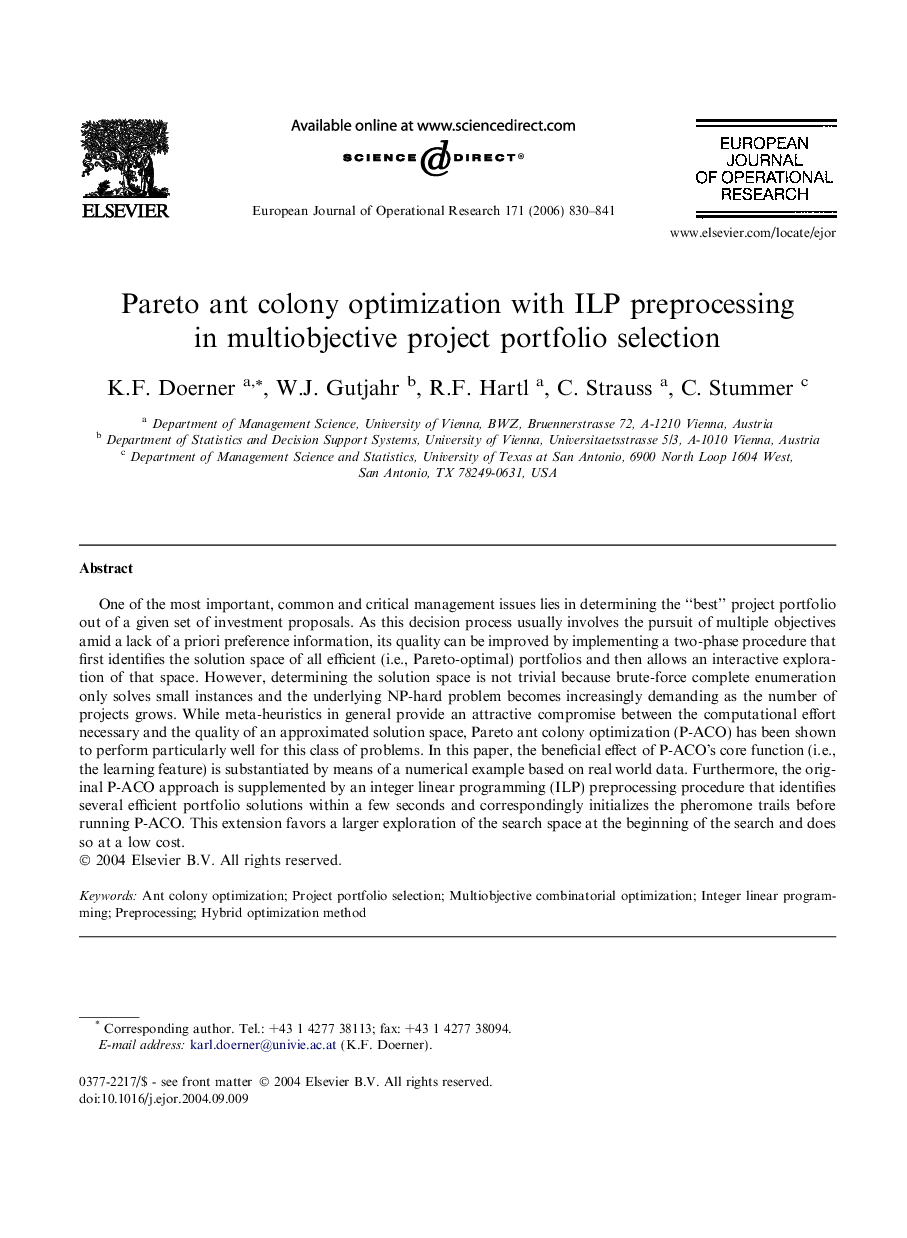| Article ID | Journal | Published Year | Pages | File Type |
|---|---|---|---|---|
| 482879 | European Journal of Operational Research | 2006 | 12 Pages |
One of the most important, common and critical management issues lies in determining the “best” project portfolio out of a given set of investment proposals. As this decision process usually involves the pursuit of multiple objectives amid a lack of a priori preference information, its quality can be improved by implementing a two-phase procedure that first identifies the solution space of all efficient (i.e., Pareto-optimal) portfolios and then allows an interactive exploration of that space. However, determining the solution space is not trivial because brute-force complete enumeration only solves small instances and the underlying NP-hard problem becomes increasingly demanding as the number of projects grows. While meta-heuristics in general provide an attractive compromise between the computational effort necessary and the quality of an approximated solution space, Pareto ant colony optimization (P-ACO) has been shown to perform particularly well for this class of problems. In this paper, the beneficial effect of P-ACO’s core function (i.e., the learning feature) is substantiated by means of a numerical example based on real world data. Furthermore, the original P-ACO approach is supplemented by an integer linear programming (ILP) preprocessing procedure that identifies several efficient portfolio solutions within a few seconds and correspondingly initializes the pheromone trails before running P-ACO. This extension favors a larger exploration of the search space at the beginning of the search and does so at a low cost.
